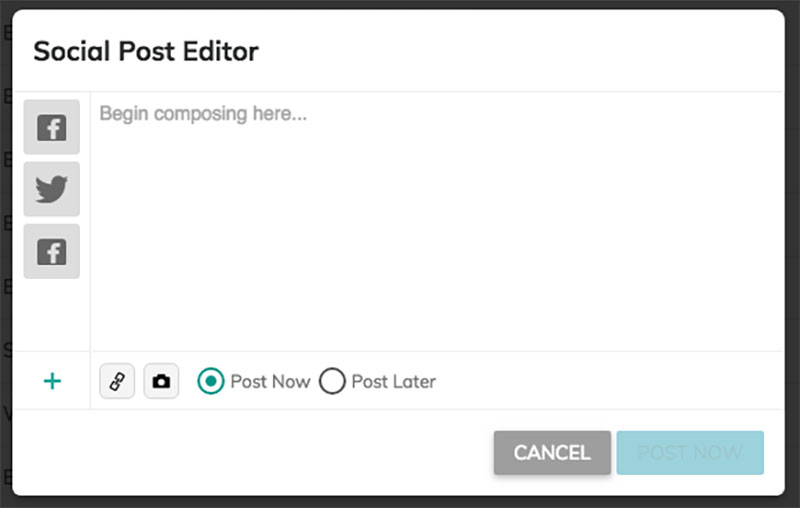
How much time should your small business spend on social media marketing?
Social media marketing strategies have increased in the current corporate environment. Business owners are increasingly curious about how digital marketing contributes to an organization’s overall performance. One characteristic is primarily the amount of money successful businesses spend on social media marketing.
How much time should my team spend on social media? It is a question that has to be answered, but first, let’s step back and discuss strategy. Reaching your objectives depends more on understanding the platforms and types of content your target audience engages with than on how many hours you spend creating articles. The secret to effective social media marketing is quality over quantity.
How much time your small business should spend on social media?
A VerticalResponse survey discovered that 43 percent of small business owners spend six hours weekly on social media marketing. Over a five-day work week, that amounts to one hour and twelve minutes per day, which seems reasonable for many small businesses.
In addition, many experts recommend a set number of posts per day by platform. The generally-recommend ranges are:
- Facebook: one to three
- Twitter: five to 15
- Instagram: one to two
- Pinterest: five to 30
- LinkedIn: one to two
That said, you shouldn’t depend on other businesses to dictate how active your business is on social media. Instead, it would be best if you considered the following factors.
Creating Social Media Objectives.
Establishing specific outcomes you want to achieve if you use social media for your small company is crucial. For instance, most individuals browse the web to see what they can discover or locate new followers. But you’ll need to be more selective than that if you want to make the most of your time.
Do you want to publish five monthly promos for your goods or services? In the first 90 days, do you wish to obtain 500 followers naturally? Is it your intention to establish yourself as an expert and attract visitors to your website so they may do business with you?
Define your social media objectives and explain how they advance your company’s performance. You may reduce time spent surfing social media and struggling to decide what to post by having a focused approach.
Using buyer personas, define your audience.
You’ll know your audience’s social media platforms and what material to share if you take the time to write out your buyer personas. You can predict what content your audience will be interested in if you are familiar with their problems. Making your first buyer persona? Utilize the LinkedIn, Facebook, or Twitter data you already have to determine when your audience is most active there (or use tools like Moz analytics’ Followerwonk, Tweriod, or Sprout Social).
Suppose your target audience is a professional between the ages of 35 and 45 who often uses Facebook and Twitter and needs to answer questions regarding a, b, and c (related to your business). In that case, it is an example of fundamental buyer persona information applicable to social media.
Before making a social media investment, research your market.
It’s simple to join the social media trend without first developing a social plan that makes sense for your company, given all the noise around it. Some companies operate exclusively via social media. You must locate your audience wherever they may be if you want your social media marketing tactics to be successful. Even the finest Instagram content won’t help your company if the people you’re trying to target don’t use it.
The most crucial thing you can do to reduce (and maximize) the time spent on social media is to prioritize your online presence. Consider your target audience’s demographics and look where they like to hang out. You may find out which social media sites some of your current clients are most likely to utilize and where they want to interact with you.
Consider your resources.
You should determine how many hours you have available for your entire department each week. Examine the amount of time your employees are now spending on social media. Use a spreadsheet or time-tracking tool like Toggl to keep track of your time. Do this for two weeks to get an idea of how much time is spent on social media. Unsurprisingly, you spend around 25% of your time on social media.
You may infer from this information and more detailed buyer profile data that your target audience uses Facebook, LinkedIn, and Twitter. You should concentrate on these areas for your first social strategy if you have limited time to spend on social media since your buyer persona data suggests they are.
Publicize articles that respond to questions a, b, and c. If you don’t have a blog, include pages that respond to such inquiries on your website. Your goal should be to provide fresh material each month that tackles these problems in fresh ways.
Even without including social media, this may seem like a lot of work. The idea is that, however. You will only waste time if you stick to these guidelines and concentrate on your content strategy; your social marketing efforts will pay off.
Make eye-catching advertising.
Your social media advertising should force viewers to stop and connect with it, whether you utilize a text, video, or image ad. That means your business can maintain its branding and look. Avoid letting your company disappear from social media. Instead, use unique approaches to pull in your audience. Your ad material might be inspired by your knowledge of your target market’s preferences for social media content. Your team should develop multiple ideas for each advertisement for the greatest outcomes.
The superiority of quality over quantity.
It doesn’t matter how often your company publishes on Facebook, Twitter, LinkedIn, Pinterest, or Instagram if those messages fail to engage readers and draw in new followers. Spend your time creating unique content that your audience will be more inclined to click on, enjoy, and share if you have to choose between fulfilling a post quota and doing so.
A smart social media post scheduler lets you plan all your posts at once, allowing you to spend the remaining days of the week (or month) concentrating on other crucial activities. It means that you don’t need to dedicate time to social media efforts every day.
Your Business Time.
Because they need to develop brand recognition and engagement with their target markets, newer firms often need to spend more on marketing. Marketing can help them become known in their region since they have not heard of them.
Consequently, rather than spending 7%–8% of their gross sales on marketing, startups and young companies with fewer than five years of operation should invest 12%–20% of that sum. The ability to spend on marketing that targets their neighborhood and helps them start accomplishing their growth objectives will be made possible by this larger proportion.
Quality over quantity.
The number of times your business posts on Facebook, Twitter, LinkedIn, Pinterest or Instagram is irrelevant if your posts do not engage your audience and attract followers.
If you’re torn between meeting a post quota and developing unique content, spend your time on unique content your audience is more likely to click, like and share. You don’t need to spend time on social media efforts every day; in fact, a good social media post scheduler allows you to plan all your posts at one time, so you can spend the rest of your week (or month) focusing on other important tasks.
Perform AB tests.
Companies frequently start and stop social media ad campaigns. This strategy might save your team time but doesn’t advance your advertising strategy. It will continue to run if you don’t address a poorly performing advertisement.
To elevate the return on investment of your social media advertising dollars, try out different approaches to your campaigns. Test headlines, descriptions, images, and other elements using A/B testing. This feature is offered by several social networking sites, including Facebook.
Using A/B testing, your team may discover what appeals to your target audience. Knowing what motivates your target market to click on and respond to your advertisement will help you create even better advertising.
Dedicated marketing expense.
Even more marketing chances are available on numerous social media sites. You may gain more from investing in one social media site over another, depending on the amount of advertising money your company has set aside for that purpose.
While the social media marketing environment is only sometimes predictable, there are several ways for companies to measure the success of their initiatives. Analyzing analytics and resolving data discrepancies with the assistance of advertising firms may be challenging but possible.
For instance, VerticalResponse includes a post scheduler that you can use to monitor your company’s online visibility and customer interaction. Remember that the most important component of customer service is ensuring they are happy and interested enough to continue using your products or services.
Businesses have been gradually adjusting to the rising needs of the digital era, moving from the conventional way of printing advertising to marketing chances on social media platforms. Your social media marketing strategies could lead to a rise in followers. However, the real engine behind your company is ongoing involvement. Other tools already in existence might assist you in deciding how to handle social media marketing for your company, even if it can take some time to see tangible results.
Professional Assistance: A Wise Strategy
When sifting through statistics and trends, finding the appropriate marketing budget for your company may take time and effort. Getting the most out of your budget might take a lot of work. It is why you should hire digital marketing assistance. With customized tactics and a vast toolkit of services, local marketing advisers can assist you in establishing your budget and maximizing its efficacy. They have expertise in fostering the growth of small companies and are locally oriented-and small company-focused.
So, how much time should you spend on social media for work?
Once you have the necessary material, decide how much time you will need and divide it up into four buckets. It’s reasonable for your company to spend 10 hours each week on social media. Assign time to each of the following buckets based on that number:
- Scheduling, enhancing, and disseminating the unique material created by your company.
- Monitoring social media for brand mentions, industry insights, and audience awareness.
- Interacting with individuals you already know by asking, responding to, and having simple conversations.
- Increasing your audience by connecting with thought leaders and influencers in your field and following relevant tags.
Each of these social media actions will be beneficial for achieving our hypothetical aim of increasing website traffic. Still, engaging in real-time social media conversations is more significant than just disseminating material.
How to know if your social media strategy is working?
The best way to know if your social media efforts are paying off is to set measurable goals for your social campaigns and track key performance indicators (KPIs).
VerticalResponse’s post scheduler automatically tracks KPIs such as your number of followers and reach, along with post interactions such as likes, shares, comments and retweets. You can even bundle social messages into folders to track multiple posts as a single campaign.
For example, you might set a goal to increase your followers by ten percent over the next month. If you currently have 1,000 followers, you want to add 100 more over the next 30 days. It’s a measurable and worthy goal since the more followers you have; the more people will see your posts and the likelier they will interact with your brand.
To achieve your goal, you can schedule posts designed to encourage following. If your campaign is successful, you’ll know your efforts are working. You’ll also know how much time you invested to reach your goal. If your campaign isn’t successful, you can evaluate why it didn’t work and adjust future campaigns accordingly.
FAQ:
How quickly does social media marketing provide results?
Don’t lose up if you’ve been using social media for a few months and don’t feel like you’re making any progress; it should take between 6 and 9 months to start seeing genuine benefits.
What role does social media marketing play in small businesses?
The likelihood of a revenue rise is double for small firms using social media marketing. A tiny company may succeed online if it targets the right audience. The Internet has a huge audience.
Is it worthwhile to pay for social media marketing?
Suppose you still need to figure out why you should pay for social media advertising or seek the advantages of paid social advertisements for your company. In that case, the solution is straightforward: more exposure, increased visibility, improved brand recognition, thorough market research, and customized advertising.
Conclusion:
It depends on your business, the quality of posts you’re publishing, and what other marketing channels you use to determine how much time you should spend advertising your company on social media.
At this stage, you must be able to oversee your social media marketing campaigns and achieve your goals. Of course, social media platforms are continuously evolving, so it’s crucial to regularly review your approach to see whether you’re still using the best platforms and to determine when your audience is most active online and if your material is succeeding. The time and money required to use social media marketing differ from company to business effectively. Current frameworks may help you estimate the necessary investment.
Join 140,000 small business owners
© 2019, Brian Morris. All rights reserved.



 SUBSCRIBE
SUBSCRIBE 


